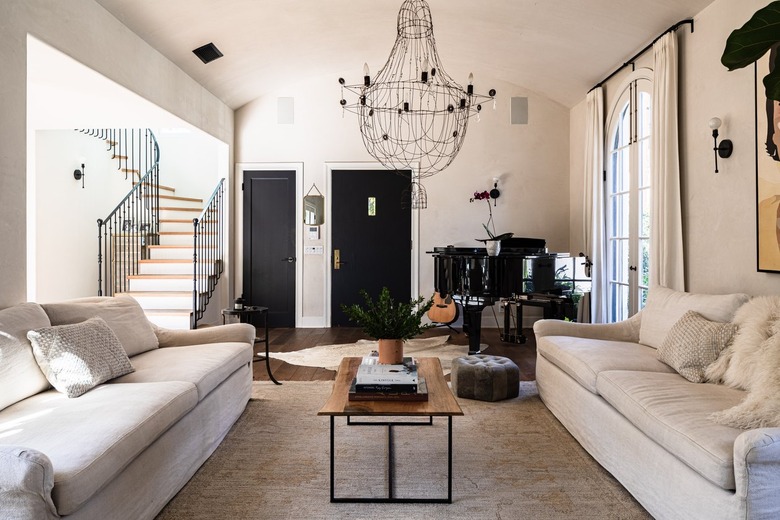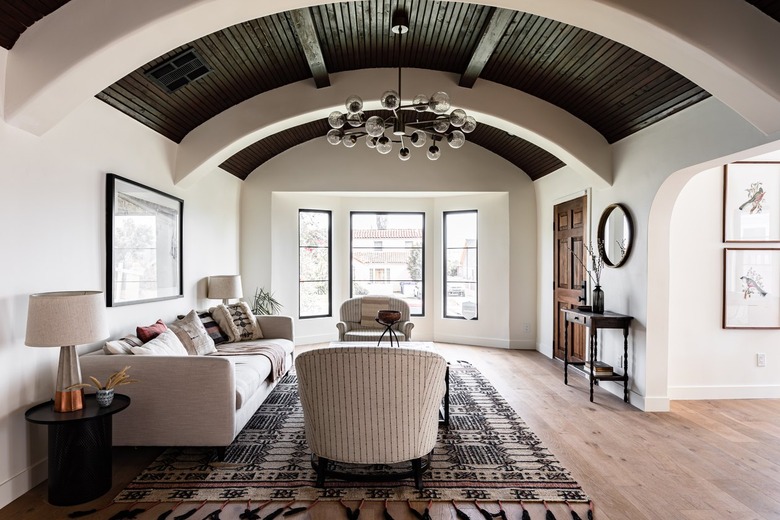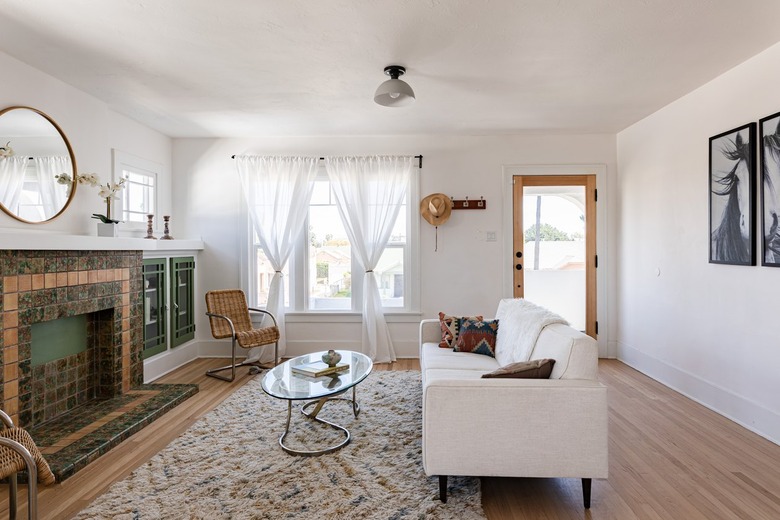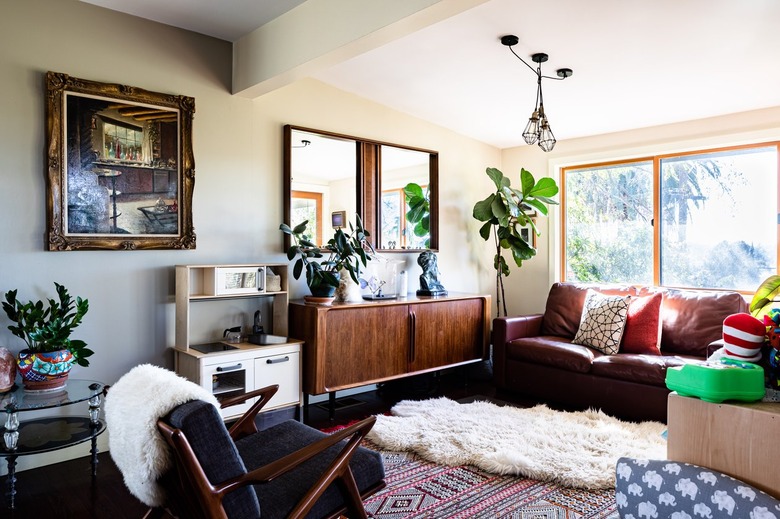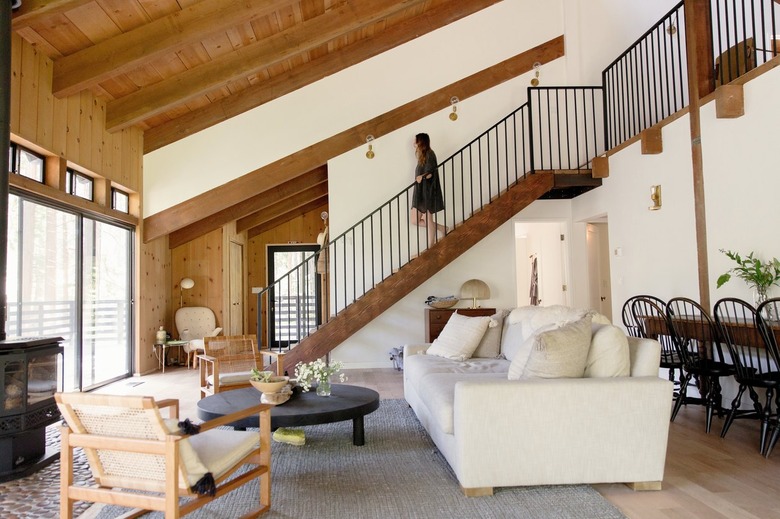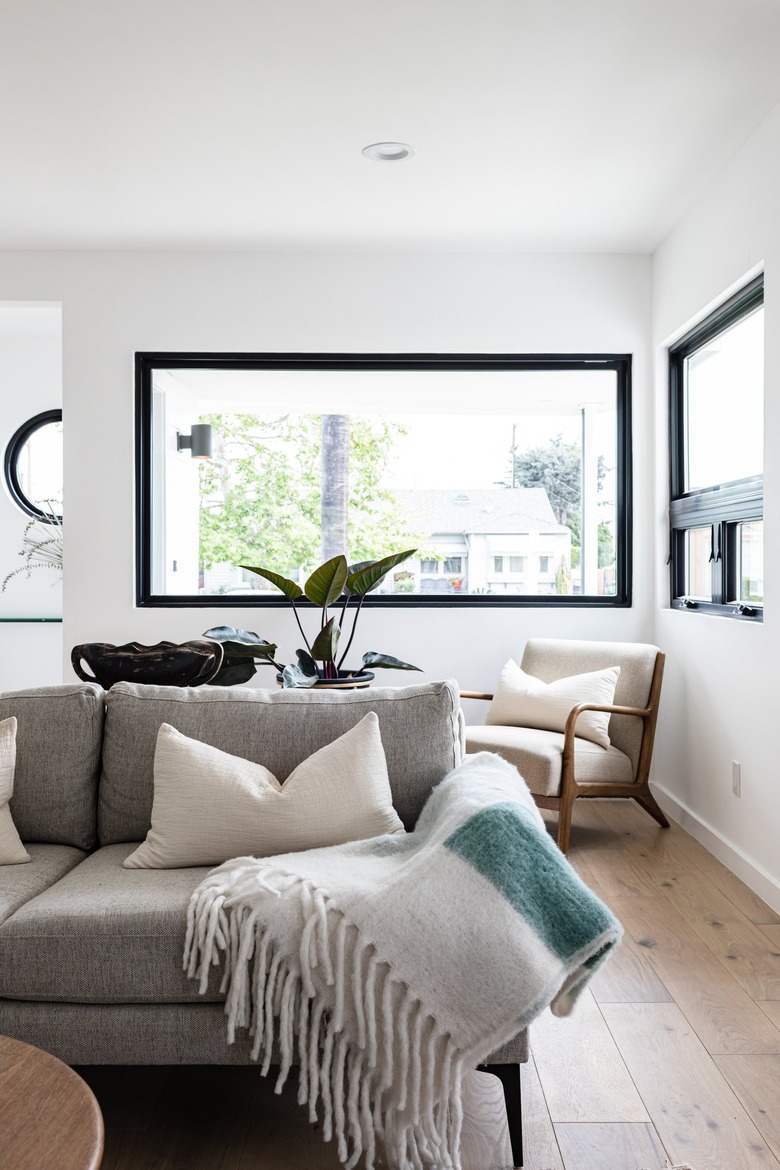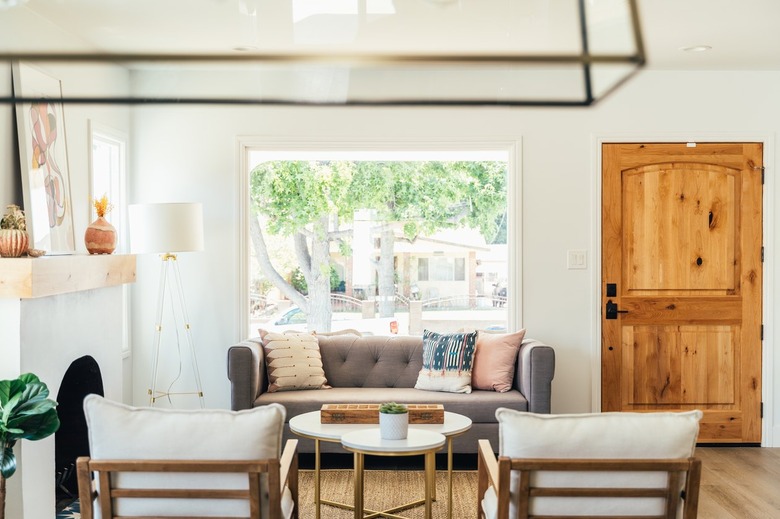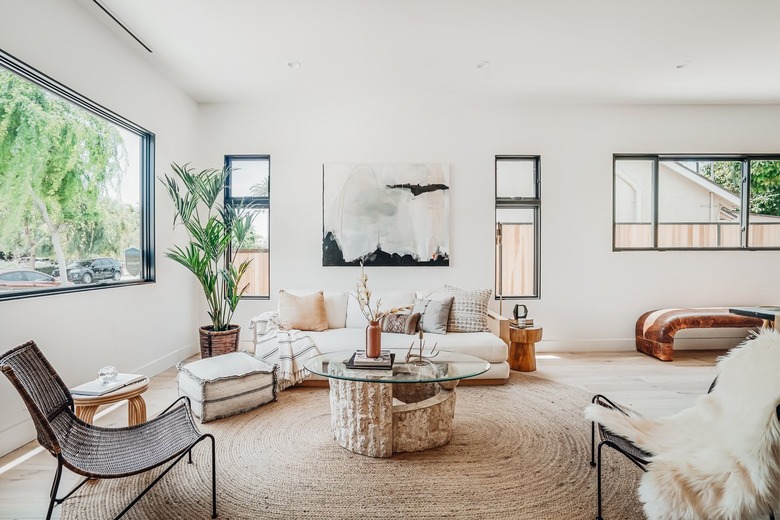Rectangular Living Room Layout Ideas: Tips And Tricks
While living rooms can come in all shapes and sizes, some are more challenging than others. For instance, rectangular spaces can pose a whole host of interior design challenges. The long and somewhat narrow footprint can oftentimes present issues with traffic flow as well as the furniture layout. But not to worry. With some careful planning and a few helpful tips, your rectangular setup will feel stylish, functional, and inviting. Ready to get started? You've come to the right place. Read on for everything you need to know — from creating a floor plan to considering the size of your couch to alternative seating options — to help you design the living space of your dreams.
Make a Floor Plan
Make a Floor Plan
One of the best ways to unlock the secret to making your rectangular living room layout livable is to create a scaled floor plan. First, measure the width of a short wall and a long wall. Then, measure the width of the doorways, windows, and any other architectural features, such as a fireplace, and mark their exact location on each wall. Start in a corner and measure the distance to the edge of each feature. Next, measure every piece of furniture you plan to use in your space. Record all of your measurements, taking care to label each one.
Once you have all of the dimensions, with 1/4-inch graph paper and an architectural scale or ruler, draw the outline of your living room. For the purposes of this plan, assume each 1/4-inch square is equal to one square foot of space. Use another sheet of paper to draw scaled furniture shapes and cut them out, so you can move them around freely. Or make photocopies of the room outline and draw different furniture arrangement ideas. This will give you a framework to visualize how different living room layouts will work (or not), so you don't have to waste time and energy moving your furniture around.
Determine Traffic Flow
Determine Traffic Flow
Determining traffic flow in a rectangular living room is essential. You don't want to create a space that is a hassle to get in and out of or to walk through. The easiest way to do this is to stand in a doorway and walk from one entryway to another. If the room is already furnished, make note of any obstacles you encountered. Use dotted lines or lines with arrows to sketch traffic flow patterns on your floor plan. Indicate which way doors open by drawing a small arc (which should form a 90-degree angle) between a line representing the door and the wall.
Identify the Focal Point
Identify the Focal Point
Depending on the size of the room, rectangular living rooms often have more than one focal point. Architectural features such as a fireplace or large picture window are built-in focal points. An entertainment center, wall-mounted television, sculpture, large piece of art, wall of shelving, or a piano could serve as a second focal point. You could even reserve a cozy corner on one end for gathering, meditating, or reading. Divide the floor plan by arranging seating areas around each focal point, resulting in at least two separate conversation zones.
Provide Proper Spacing
Provide Proper Spacing
Any room in the house will feel cluttered if you don't provide adequate space to maneuver between furniture pieces. Major pathways require a minimum of 3 feet. A walkway between two pieces of furniture should measure at least 2.5 feet. Leave 18 inches between the coffee table and sofa or 12 inches between the coffee table and an armchair. If you have an open layout, consider the traffic flow in and out of adjacent spaces, like the dining room.
Narrow Living Rooms
Narrow Living Rooms
Some rectangular living rooms are very long and narrow, creating the feel of a tunnel or bowling alley. To help remedy this effect, create a conversation area at one end of the room. Place a small end table between two chairs facing each other or angled and facing out if there is a window. Place a loveseat against the short wall to help stop the eye.
If a TV or fireplace exists on a long wall, arrange seating to accommodate a walkway on one side of the room. Face-to-face sofas or lounge chairs placed directly in front of the fireplace, but perpendicular to the wall, will leave space for a walkway against the opposite wall. Sofas and chairs placed against the opposite wall leave room for a walkway between the coffee table and TV. Consider built-ins on one end like a bookcase or other storage unit to ground the space a bit more.
Large Rooms
Large Rooms
Large rectangular living rooms can accommodate a multitude of furniture arrangements. To help fill the space and create a balanced look, float furniture in the middle of the room. Place two sofas face to face, separated by a coffee table in between. Always include a large area rug (or layer multiple rugs) to make it feel complete. Or, create a U-shaped conversation area in front of a fireplace or TV on a long wall, leaving a walkway behind the sofa.
Place a desk and a large bookcase along one short wall for extra storage and two small chairs and an end table on the opposite short wall. A floating sectional sofa can also be placed in a wide rectangular living room, breaking up the long lines of the room. If you have the space, and you are a music lover, incorporate a piano, some stereo equipment, or just a cozy nook for spontaneous jam sessions at one end of the living room.
Furniture Size
Furniture Size
Beyond furniture arrangement, layouts, and traffic flow, looking at the scale of your furniture pieces will help your rectangular setup immensely, especially if you are working with a small living room. For instance, instead of a sectional sofa, consider a smaller couch and a matching ottoman instead. This will give you a similar look without taking up as much space, and you can always move the ottoman around as needed. A smaller and less bulky couch, petite end tables, and less obtrusive accent chairs are good options to consider, especially if you want to divide your room into more than one area. Invest in multifunctional pieces such as a coffee table that can also work as a side table. Or consider modular sofas composed of smaller pieces that offer lots of flexibility.
Alternative Seating Options
Alternative Seating Options
Whether you're going with a smaller couch or sectional, take a look at some alternative ways you can provide seating, too. While you may have a spacious rectangular living room, going with traditional seating might not be the best solution for you. Perhaps you're someone who likes to entertain and needs more spots for people to hang out. In that case, throw in a few alternative options like poufs, floor cushions, benches, small stools, and even bean bags. These options provide guests with a comfortable place to take a load off, and yet they are small and can be moved around easily so they won't interrupt the flow of your space. Accent chairs are also easy to move around and are sure to come in handy during get-togethers, book clubs, or even movie nights.
